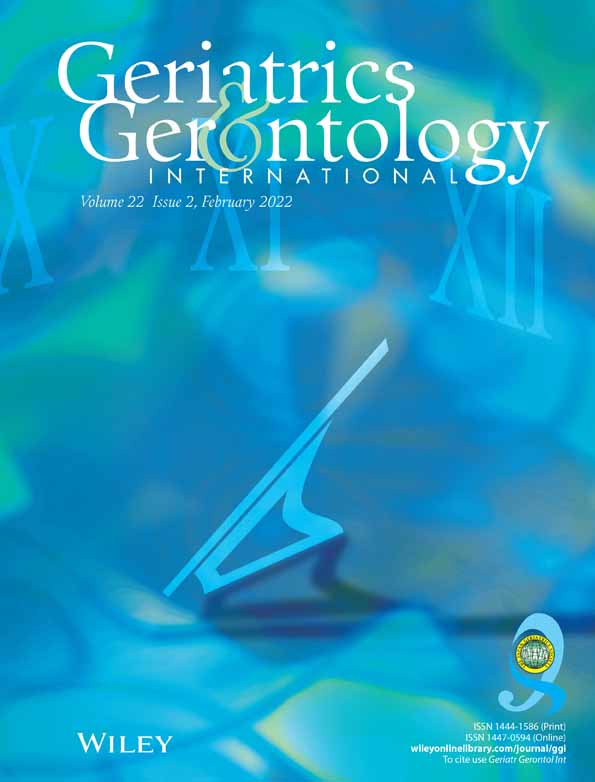Association between activity restriction due to fear of falling and mortality: Results from the Korean longitudinal study of aging
Abstract
Aim
To analyze the correlation between activity restriction due to fear of falling and mortality among Koreans aged ≥45 years.
Methods
After excluding missing values, the data of 411 participants from the first to sixth waves of the Korean Longitudinal Study of Aging were analyzed using the χ2-test, log-rank tests and Cox proportional hazards model.
Results
In model 1, which did not include activity restriction due to fear of falling as an independent variable, the death rate increased by 1.024-fold (hazard ratio 1.024, 95% confidence interval 1.000–1.050, P = 0.0498) as the number of falls increased by one. In model 2, which included activity restriction due to fear of falling as an independent variable, participants with experience of activity restriction showed 1.993-fold higher mortality (hazard ratio 1.993, 95% confidence interval 1.112–3.572, P = 0.0205) than those without such experience. In addition, as the number of falls in the group with chronic diseases increased by one, the mortality rate increased by 1.028-fold (hazard ratio 1.028, 95% confidence interval 1.001–1.057, P = 0.043).
Conclusions
There was a close relationship between activity restriction due to fear of falling and mortality. Therefore, this study can serve as the foundation for policies and institutional measures to reduce the mortality rate of groups with activity restrictions due to fear of falling. Geriatr Gerontol Int 2022; 22: 168–174.
Open Research
Data availability statement
Data Availability Statement The data supporting the findings of this study are openly available at https://survey.keis.or.kr/klosa/klosa01.jsp




